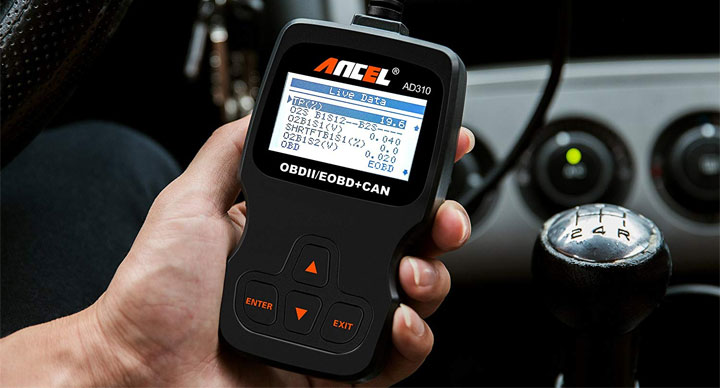P0603 Code (Symptoms, Causes, and How to Fix)
Today’s vehicle computers continually adapt to your driving style. But electrical faults can erase learned memory, triggering code P0603. This forces settings to default, impairing performance until relearned.
Read on to learn what specifically causes a P0603 code, how serious it is, and what you need to do to properly fix it.

Related: PCM vs ECM vs ECU vs TCM (Vehicle Computers)
What Does Code P0603 Mean?
The majority of today’s vehicles now feature “Keep Alive” functions, which retain a certain degree of power to the PCM, even when a vehicle is at rest. This residue power allows a PCM to retain certain information that is vital to overall vehicle function, such as that which is stored on the basis of adaptive control.
Adaptive control serves as a feature that allows a vehicle’s intelligent modules to continuously learn from various operator inputs, thereby enhancing operational efficiency. This can influence a number of vehicle functions, including transmission shift points, fuel trims, and ignition system inputs.
In the event of DTC P0603, a vehicle’s PCM has identified a relative loss of Keep Alive Memory inputs, thereby potentially compromising a number of adaptive controls.
As a result, the affected vehicle’s PCM is forced to operate off of preset parameters, rather than those stored through the normal adaptive sequence. These inputs often differ significantly from those retained adaptively, thereby compromising the efficiency of multiple systems.
See Also: P0606 Code, P1000 Code, P2509 Code
Symptoms of Code P0603

Diagnostic trouble code P0603 is often accompanied by a number of secondary symptoms, some of which tend to be more troubling than others. Recognizing these symptoms can prove helpful when attempting to diagnose the issue at hand.
The following are several of the most common symptoms associated with DTC P0603.
- Illuminated check engine light
- Delayed or improper shift points
- Reduced fuel economy
- Failure to pass emissions testing
- Stalling at idle
Causes of Code P0603
Diagnostic trouble code P0603 can be triggered by a host of underlying issues, some of which are far more perplexing to diagnose than others. Understanding the potential causes of this DTC can assist you in returning your vehicle to service in a timely manner.
The following are several of the most common causes of DTC P0603.
- Insufficient PCM voltage at-rest
- Corroded or compromised PCM ground
- Defective PCM “Keep Alive” module
- Faulty PCM controlled intelligent devices
Is Code P0603 Serious?
Diagnostic trouble code P0603 is generally considered to be quite serious in nature, due in large part to its potential to interrupt otherwise streamlined vehicle operation.
A failure of this type also robs a vehicle’s PCM of its ability to learn adaptive, thereby marginalizing vehicle efficiency as a whole. As a result, vehicle performance often suffers to a noticeable extent.
Additionally, in the most severe of cases, a vehicle might fail to start, or even stall, when an active P0603 diagnostic fault code is logged. This is not only inconvenient but can serve as a relatively serious safety issue as well. For this reason, it is important to drive a vehicle no longer than required when in this state.
In any event, the root cause of a vehicle’s P0603 DTC should be diagnosed and resolved at the first available opportunity. Doing so prevents additional hardship, and mitigates much of the risk associated with continued operation in this state.
For most individuals, DIY repair of this trouble code is not recommended and instead, an appointment with a trusted automotive service center should be made as soon as possible.
How to Fix Code P0603

The following steps can be used to troubleshoot an active P0603 diagnostic trouble code. As always, be sure to consult a factory-specific service manual for your particular make and model of vehicle, before attempting any such repairs.
#1 – Check For Additional DTCs
Before beginning the diagnostic process, be sure to check for the presence of any additional DTCs with an OBD2 scanner. Any DTCs that are found should be thoroughly diagnosed before proceeding.
#2 – Inspect PCM Wiring
Begin by carefully inspecting the main wiring that leads to your vehicle’s PCM. Check for any broken or frayed wiring, as well as the presence of any loose or compromised connections. Make any necessary repairs before proceeding.
#3 – Check PCM Ground
Next, trace the ground lead to your vehicle’s PCM, ensuring that no damage is present. Ensure that the connecting lug to this ground lead is free of any corrosion.
Finally, back-probe this lead’s connection to the PCM, verifying that a suitable ground is being delivered.
#4 – Verify Power Deliver to KAM
With a suitable ground identified, you must now verify that your vehicle’s PCM is receiving a steady voltage feed to its Keep Alive Module (KAM). A vehicle-specific wiring diagram will be required to form such a diagnosis. If no power is present in this Module, further circuit-related troubleshooting will be required.
#5 – Check For Shorted Intelligent Devices
Assuming that both power and ground are being delivered to your PCM’S KAM, one must determine if any connected intelligent devices have shorted, causing DTC P0603 to set.
The procedure for such diagnostics differs from one vehicle to the next, thereby making it necessary to consult factory-specific service literature for your particular vehicle. If this testing reveals no further issue, a PCM-related fault is likely to blame.
- Car Temperature Gauge Stopped Working? (Here’s Why) - Apr 15, 2024
- Ignition Coil vs Coil Pack (What’s the Difference?) - Apr 8, 2024
- Windshield Wipers Won’t Turn Off? (Causes and What to Do) - Apr 5, 2024
